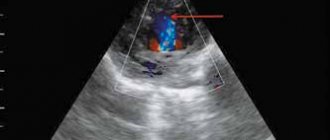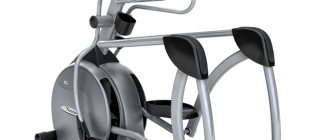What is catheterization
The content of the article
Catheterization is the process of inserting a urological catheter, a thin flexible tube connected to a reservoir. The tube allows urine to drain from the urinary tract. Most often, the device is inserted through the urethra into the bladder.
Catheter
It happens that the catheter needs to be inserted deeper into the ureters to cleanse the kidneys. In these cases, the device may not always be installed as described above. It is injected through the skin directly into the kidney or bladder (via the pubic symphysis).
Foley catheter care and replacement
Flushing the catheter is necessary because This is a reusable product. Before you start washing, you need to wash your hands with soap and treat them with antiseptics. Then:
- clean the outside of the catheter with alcohol, especially carefully walk around the place where the tube is connected to the catheter,
- disconnect the catheter from it and fill it with saline solution using a sterile syringe,
- drain the liquid into the prepared container.
The procedure must be repeated several times until the catheter is clear. Then connect it to the tube and put it in a sterile place.
Replacing the catheter is also important: it should be used no more than 5, maximum 7 days. You can only use silicone catheters for longer. The catheter is changed as follows:
- Be sure to wash your hands and treat them with antiseptic,
- remove the clamp and completely empty the catheter,
- place the patient on his back, legs should be spread and knees bent,
- when the patient relaxes, gradually remove the catheter, possibly using a special clamp to maintain sterility,
- be sure to ensure that the catheter remains intact.
Catheterization: indications
- The catheter should be placed first when urine is standing still, which can happen with benign prostatic hyperplasia or kidney stones.
- The device is used for perineal trauma, which leads to damage to the urethra. Before the organ heals, drainage is inserted through the abdominal wall directly into the bladder.
- Catheterization is also necessary after some operations on the genitourinary and gastrointestinal systems.
- The catheter is inserted into patients in a pharmacological coma.
- The device helps laboring women if they are unable to empty their bladder.
Bedridden patient with a catheter
In all these cases, the catheter is not inserted for long, since its presence contributes to urinary tract infections. But some patients need catheters permanently. For example, urine diversion is needed for people with a neurogenic bladder and neurological diseases.
Contraindications for catheter installation and special instructions
It is recommended to avoid the use of intravenous catheters:
- into the veins of the lower extremities;
- on areas of veins near joints and arteries;
- into nodular veins;
- into the median ulnar vein;
- veins located under damaged skin.
In addition, there are a number of rules related to difficulties in catheter installation that occur in patients with weak, thin and fragile veins:
- if the healthcare worker was unable to enter the vein and install the catheter after three attempts, the specialist should be changed;
- the higher the number of attempts to insert a catheter, the higher the risk of developing mechanical complications;
- mandatory treatment with antiseptic agents reduces the risk of colonization of the catheter cavity by pathogenic microorganisms.
If the catheter and insertion area are not properly treated, the risk of developing nosocomial infection increases. To reduce the risk of infection, it is allowed to leave the catheter in the patient’s vein for 72 hours. And if there is no need to administer any drugs in the future, you must immediately remove the catheter from the vein.
Catheterization procedure
For most people, catheterization involves inserting a drain through the urethra into the bladder. If the procedure is carried out correctly, everything will be done without injury.
The catheter is coated with a gel with gliding and anesthetic properties. This substance also has a bactericidal effect, which prevents urinary tract infections. The tube itself is sterile, but may allow bacteria to migrate (such as E. coli that accumulate around the anus).
Catheterization is easier in women because they have a short urethra. In men, the urethra is long and naturally narrowed in three places, therefore, in order not to damage it, this procedure should be performed only in a good clinic with a urologist.
Removal of the catheter is also painless. But the first urination can be quite unpleasant (may be accompanied by a burning sensation, mild pain). Incompetent, too aggressive procedure causes pain and can even damage the urethra.
Painful urination
The cause of discomfort and inflammation of this sensitive part of the urinary tract can also be a drainage diameter that is too large.
Principle of catheter design
First of all, the medical staff should know how to administer intravenous infusion of medications. But if patients know information about the procedure, they may be less afraid.
A catheter for intravenous drug administration is a thin, hollow tube. It is inserted into the bloodstream.
This can be done in the arms, neck or head. But inserting catheters into the vessels of the legs is not recommended.
These devices are installed so that there is no need to constantly pierce the veins. After all, this can cause them to become injured and inflamed. Constant damage to their walls leads to thrombus formation.
Catheterization: how to behave at home?
Most of us have seen patients in the hospital walking around with a bag of urine hanging on a stand. But in most cases they leave the hospital without it. However, sometimes the healing process after surgery or injury takes a long time, so patients are discharged home with a catheter. How do they live with it every day?
In principle, patients with a catheter can lead a normal life, that is, do light exercise, walk around the house, go for a walk or even go to work (the urine bag can be attached using special Velcro straps to the inner thigh).
Fixation of the catheter
However, if you have such a device, you need to get plenty of rest and remember to follow a few rules:
- First of all, you need to be careful with hygiene. Wash your hands thoroughly with soap and water before emptying the bladder or replacing it with a new one. It is also important to take care of intimate hygiene by washing the perineum and the outside of the catheter at least once a day with soap and water to prevent the migration of microorganisms into the urinary tract.
- For the same reason, you should not unnecessarily disconnect the bag from the drain hole.
- It is necessary to empty the urine bag regularly because urine is a good breeding ground for microorganisms.
- People with a catheter should drink more, preferably disinfectant herbal infusions, drinks rich in vitamin C, such as blackcurrant juice, cranberry juice. Low urine pH limits the growth of microbes.
What is a central venous catheter?
A central venous catheter (CVC) is installed on main, large veins and is used to connect to an infusion system or syringe.
Unlike peripheral catheters, which are installed on the saphenous veins, the manipulation of catheter installation is carried out in the projection of deep-lying large veins, such as the subclavian (under the collarbone), internal jugular (on the side of the neck), and femoral (in the groin).
Central venous catheters are widely used as long-term catheters for drug administration, blood collection, and parenteral nutrition. A subclavian venous catheter is installed for a period of no more than 3 weeks.
Installation of a venous catheter
The main indication for installing a central venous catheter is emergency conditions during resuscitation and intensive care, inaccessibility of peripheral veins, for the administration of intravenous nutrition, and during long-term intensive infusion therapy.
- Installation of a catheter for severe patients during long-term treatment in hospital and intensive care;
- Installation for administration of parenteral nutrition;
- If long-term administration of substances is necessary, for example, during chemotherapy in cancer patients;
- During planned and emergency operations, during transfusion of large volumes of solutions;
- A catheter is installed if the peripheral veins in the arms cannot be catheterized;
- For hemodialysis and hemofiltration;
- And others.
Contraindications
There are several contraindications for central venous catheterization.
- Inflammatory processes at the injection site;
- Blood clotting disorder;
- Thrombosis of the vein in which the catheter is planned to be installed;
- Clavicle injuries and bilateral pneumothorax (for subclavian access).
Complications
During and after installation of a CVC venous catheter, the following complications are possible:
- Pneumothorax and hemothorax - accumulation of air or blood in the pleural cavity;
- Hydrothorax is an accumulation of fluid in the pleural cavity;
- Catheter infection;
- Incorrect direction of the CVC, nerve damage;
- Puncture of arteries, lymphatic vessels;
- Irregular heart rhythm when advancing the catheter;
- Vein thrombosis and pulmonary embolism;
- Displacement of the subclavian catheter into the internal jugular vein.
Types of catheters
The choice of the optimal option for venous access is influenced by the duration of therapy, its frequency and regularity, requirements for system care, comfort for the patient and convenience for medical personnel, the volume of administered drugs, their physical properties, as well as the possibility of conducting infusion therapy in a hospital or on home.
Subclavian catheter. Inserting a catheter into the subclavian vein
Installation of a subclavian catheter is carried out only in a hospital setting, in the central vein, and is used in intensive care and intensive care settings if the catheter is expected to remain in the venous bed for more than 5 days. The maximum service life of the catheter with proper use is up to 3 weeks.
If there are no other contraindications, the catheter is installed in the subclavian vein. The choice of vein is based on the physiological characteristics and condition of the patient.
Implantable subcutaneous PORT systems
The port system, an implantable subcutaneous catheter, is inserted into a central vein and can be used for up to 5 years. The catheter can be 1 or 2 chambered, which allows you to administer 1-2 drugs simultaneously (alternately), mainly for chemotherapy or small volumes of drugs.
Main advantages of the port system
- The port system allows you to establish rapid venous access for the infusion of small volumes of drugs by slow infusion or blood sampling.
- The system provides painless repeated access for up to 5 years in cases of proper use and the absence of inflammatory phenomena.
- The port system does not create discomfort, is invisible, and allows you to lead a normal lifestyle.
- Infusion therapy through the port system requires placement of a Huber needle by a specialist, which requires replacement every 5-7 days.
- If the Huber needle is incorrectly inserted into the port of the system, the bottom of the port of the system may be injured, which can damage it.
The catheter port is a titanium reservoir, about 4 cm in diameter, 1 cm thick. A silicone membrane is installed on the top of the port, through which medications are infused with a special Huber needle. The port is placed under the skin, usually in the upper third of the chest.
The port system requires preventative flushing every 4-6 weeks through a Huber needle.
The oncology clinic uses more modern and easy-to-maintain analogs of port systems, such as Picc Line catheters with which the patient can be discharged home and undergo infusion therapy at home, as well as for relatives, caring for this type of catheter like Picc Line is very simple and does not require special knowledge.
Guardian Angel uses catheterization systems from the world's leading manufacturers; models differ in type, size, catheter length, and materials of manufacture.
To get a consultation
The installation price of the Picc Line single-lumen system is 35,000 rubles
The installation price of the Picc Line double-lumen system is 45,000 rubles
Implantable PICC systems (PICC)
The PIC venous catheter is an implantable catheter that is installed in a peripheral vein, which reduces possible complications to a minimum, in particular, eliminating the risk of thrombosis.
Can be used up to 6 months. The catheter can be 1, 2, 3 chamber. A PIC catheter, a silicone or polyurethane tube 45-65 cm long, may contain 1-3 isolated lumens. The distal end of the catheter may be open or have an anti-reflux valve.
Polyurethane catheters are advantageous when used in patients who require the administration of highly viscous solutions or large volumes of fluid.
Silicone catheters have higher biocompatibility and durability, are softer than polyurethane catheters, and better follow the contours of the vascular bed.
PIC catheters allow you to connect several cameras to the system, which is important for patients receiving several different drugs that are incompatible with each other at the same time.
PIC systems are installed by puncture through the medial saphenous vein of the arm. The installation procedure takes 10-30 minutes, it is simpler and safer compared to other types of devices.
It is advisable to implant PICC in patients
- Patients with tracheostomies, since they have a significantly increased risk of infection of the CVC in the area of the upper shoulder girdle;
- PICC implantation in patients with anatomical abnormalities of the neck and chest
Implantation of a PIC catheter through a peripheral vein eliminates the possibility of developing pneumothorax and hemothorax, injury to the jugular or subclavian artery.
The main advantages of the Picc Line catheter system
- The lifespan of the Picc Line catheter is 6 months.
- The Picc Line system allows you to establish rapid venous access for infusion of large volumes of drugs, blood sampling, and chemotherapy.
- Easy care of the Picc catheter for relatives, rinsing with saline once a week when the catheter is not in use, and during infusion therapy, rinsing after each infusion.
- The Picc Line catheter is installed in a peripheral vein, which reduces possible complications to a minimum, in particular, eliminating the risk of thrombosis. It also does not create discomfort and allows you to lead a normal lifestyle.
- Installation of the catheter is done quickly and painlessly.
- Picc Line catheter is a modern and easy-to-care analogue
- The catheter can be 1, 2, 3-chamber, which allows infusion of large volumes of various even incompatible drugs (for example, drugs for chemotherapy).
- The cost of a Picc Line catheter is several times lower than installing a Port system.
Oncology diagnostics
Emergency help
CANCER. Stages, treatment, methods.
Innovations in symptomatic and palliative treatment of oncology at the Guardian Angel Clinic
Literature
1. Health status of pregnant women, women in labor, postpartum women and newborns. Data from the Russian Ministry of Health, Rosstat calculations, updated September 24, 2018.
2. Health status of newborns - the number of newborns born sick and falling ill. Data from the Russian Ministry of Health, updated 06/08/2018.
3. Zhirkova Yu.V., Belyaeva I.A., Kucherov Yu.I. Percutaneous catheterization of central veins in newborns: a manual for doctors and nursing staff / ed. A.A. Baranova; Union of Pediatricians of Russia, Scientific Center for Children's Health of the Russian Academy of Medical Sciences. M.: Pediatr, 2013. 32 p.
4. Aleksandrovich Yu.S., Pshenisnov K.V. Neonatal intensive care: A guide for doctors. St. Petersburg : Publishing House N-L, 2013. pp. 53-60.
5. Neonatology: in 2 volumes / ed. T.L. Gomelly, M.D. Cannigam, F. G. Eyal. M.: Binom. Laboratory of Knowledge, 2015. T. 1. P. 392-408.
6. Romesberg T. Midline Catheter Use in the Newborn Intensive Care Unit. UNF Theses and Dissertations, 2014. 544 p.
7. Dawson D. Midline catheters in neonatal patients. Evaluating a change in practice // J. Vasc. Access Dev. 2002. Vol. 7, N 2. P. 17-19.
8. Griffiths V. Midline catheters: indications, complications and maintenance // Nurs. Standard. 2007. Vol. 22, N 11. P. 48-57.
9. Leick-Rude M., Haney B. Midline catheter use in the intensive care nursery // Neonatal Network. 2006. Vol. 25, N 3. P 189-199.
10. Parenteral nutrition of newborns. Clinical recommendations / ed. N.N. Volodina. M.: RASPM, 2015.
11. Pettit J, Wyckoff MM Peripherally Inserted Central Catheters: Guideline for Practice. 2nd ed. Glenview, IL: National Association of Neonatal Nurses, 2007.
12. Adams DZ, Little A., Vinsant C., Khandelwal S. The midline catheter: a clinical review // J. Emerg. Med. 2021. Vol. 51. P 252-258.
13. Caprara J. PICC versus Midline // Home Healthcare Now. 2021. Vol. 35, N 10. P. 575-576.
14. Chenoweth KB The extended dwell peripheral intravenous catheter is an alternative method of NICU intravenous access // Adv. Neonatal Care. 2021. Vol. 18, N 4. P 295-301.
15. Freeland K. Midline Catheter Usage in the Neonatal Population. Master's Projects and Capstones, 2021. 623 p.
16. Intravascular catheters - sterile and single-use catheters. The International Organization for Standardization. ISO 10555-1:2013(E).
17. Intravascular catheters - sterile and single-use catheters. The International Organization for Standardization. ISO 10555-5:2013(E).
18. State standard of the Russian Federation. Intravascular catheters, sterile, single use. Part 1. General technical requirements. GOST R ISO 10555.1-99. M.: Standards Publishing House, 2000.
19. State standard of the Russian Federation. Intravascular catheters, sterile, single use. Part 5. Peripheral catheters with an internal needle. GOST R ISO 10555.5-99. M.: Standards Publishing House, 2000.
Classification
Depending on the area of use, the following types of catheters are distinguished:
- aspiration – effective cleaning of the nasal and oral cavities in order to restore respiratory function;
- epidural - injected into the epidural space to administer anesthesia;
- urological – used in the absence of natural urination or urinary incontinence;
- umbilical - used in neonatology for cord blood transfusion;
- gastric - inserted into the stomach;
- trocar catheters – designed for the rapid drainage of fluid from the pleural cavity.
Despite the fact that many types have a similar structure, it is highly recommended not to replace them interchangeably. Such actions can cause complications.









